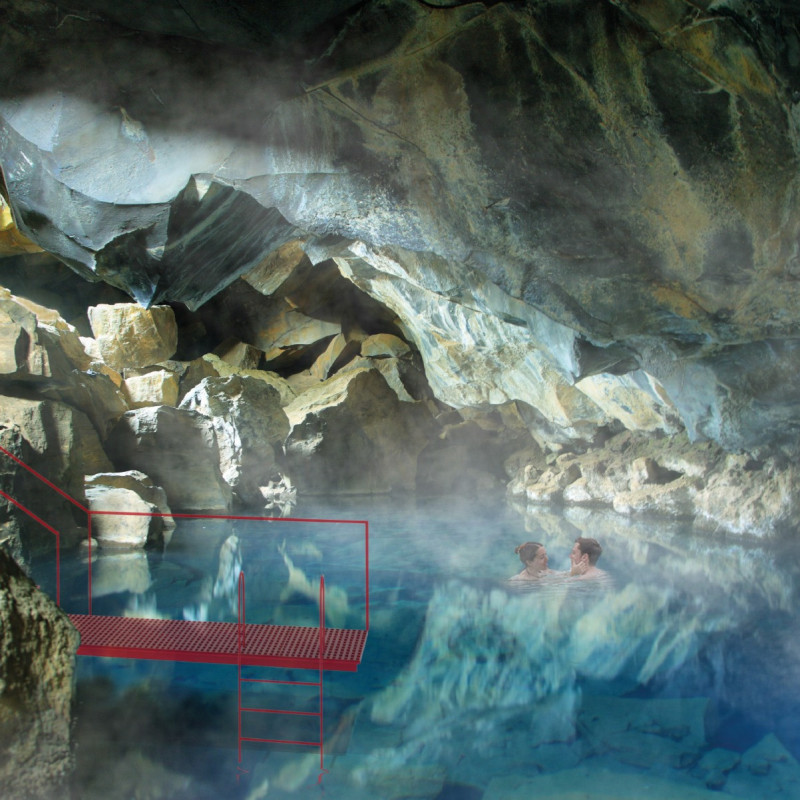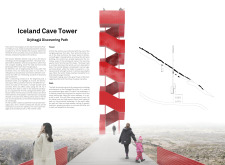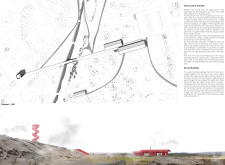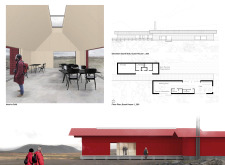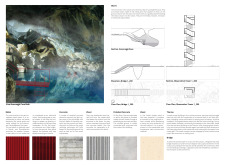5 key facts about this project
The architectural project situated at the Grjótagjá Cave site in Iceland integrates human intervention within a unique geological landscape. This project represents an effort to enhance the visitor experience while showcasing the cave's natural beauty and geothermal features. The main components include the Iceland Cave Tower, a visitor center, and a service building, all thoughtfully designed to align with the ecological and geological context of the site.
The Iceland Cave Tower serves as a focal point, drawing visitors to the site while providing panoramic views of the surrounding landscape. The design features a spiral form, allowing visitors to ascend and experience the changing vistas. This visually compelling structure is constructed from durable red corrugated metal, a choice that reflects Iceland's natural environment while ensuring longevity against harsh weather conditions.
The visitor center is strategically positioned between the natural formations and the tower, functioning as a reception area that welcomes tourists. The design prioritizes large windows to maximize natural light and views of the landscape. The use of warm timber for its finishes adds a tactile quality to the interior, creating an inviting atmosphere for visitors. Additionally, the incorporation of geothermal heating exemplifies the project’s commitment to sustainability and energy efficiency.
The service building supports the functionality of the site, housing necessary facilities while maintaining the architectural language established by other structures. Its thoughtful placement ensures that it integrates seamlessly into the overall design, ensuring that operational needs do not detract from the visitor experience.
Innovative design approaches set this project apart from traditional visitor centers in similar locations. The integration of the cave's geological features into the architectural layout allows for a unique relationship between the built environment and natural landscape. The emphasis on sustainability through the use of geothermal energy and local materials reflects an understanding of environmental stewardship. In addition, the design encourages exploration and discovery, inviting visitors to engage with both the architecture and the natural world.
In summary, this architectural project at Grjótagjá Cave distinguishes itself through its contextual sensitivity and innovative use of materials and design. To gain deeper insights into the architectural plans, sections, designs, and ideas, readers are encouraged to explore the project presentation for further details.


